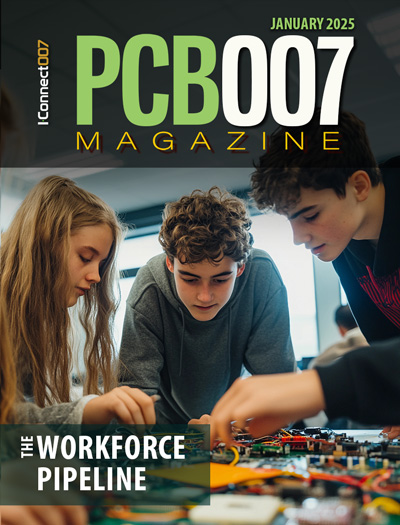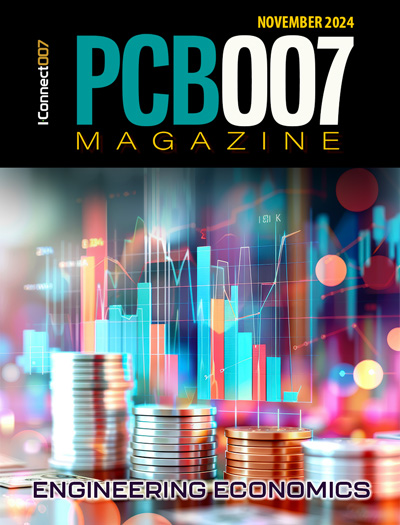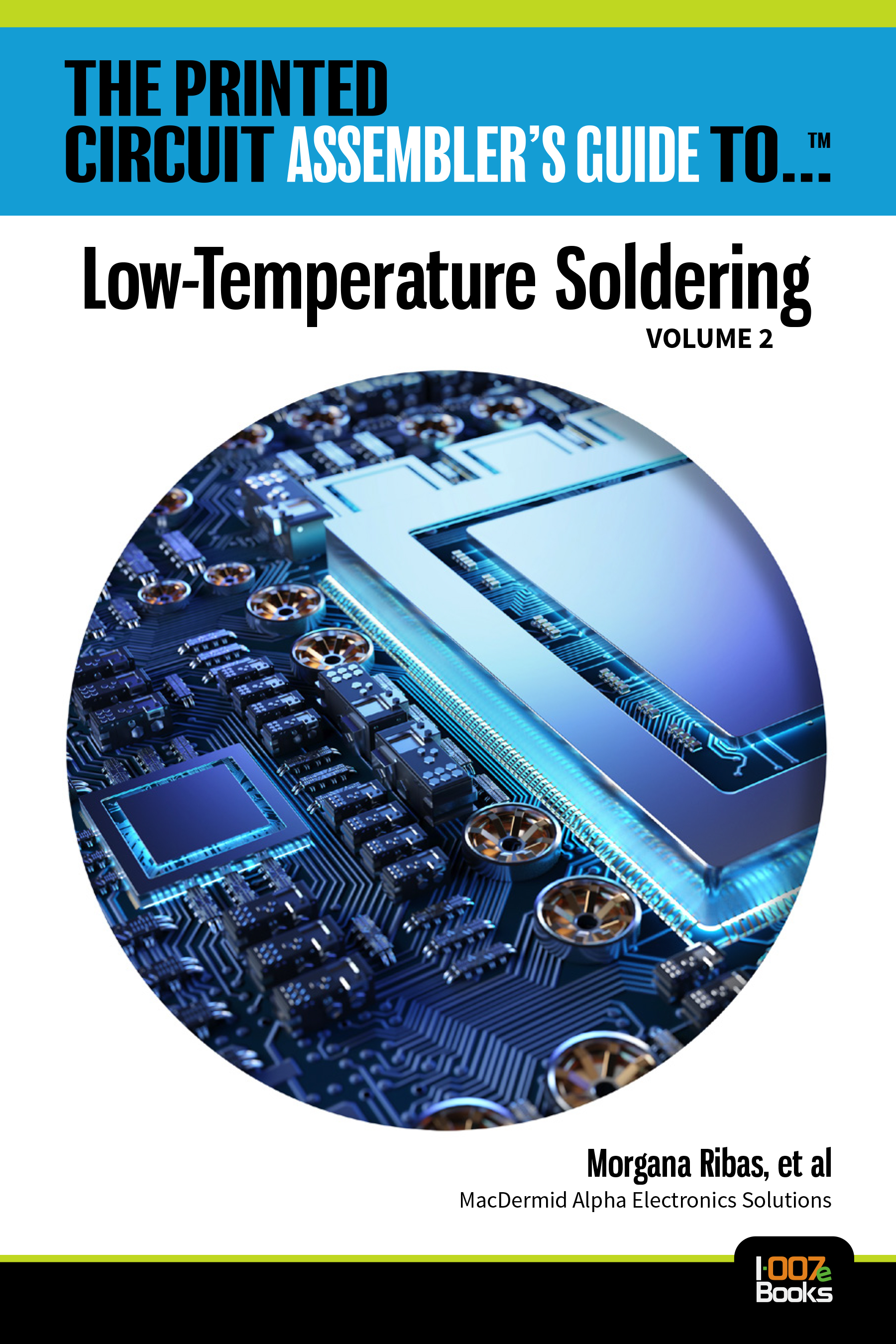-

- News
- Books
Featured Books
- pcb007 Magazine
Latest Issues
Current Issue
Fueling the Workforce Pipeline
We take a hard look at fueling the workforce pipeline, specifically at the early introduction of manufacturing concepts and business to young people in this issue of PCB007 Magazine.

Inner Layer Precision & Yields
In this issue, we examine the critical nature of building precisions into your inner layers and assessing their pass/fail status as early as possible. Whether it’s using automation to cut down on handling issues, identifying defects earlier, or replacing an old line...

Engineering Economics
The real cost to manufacture a PCB encompasses everything that goes into making the product: the materials and other value-added supplies, machine and personnel costs, and most importantly, your quality. A hard look at real costs seems wholly appropriate.
- Articles
- Columns
Search Console
- Links
- Media kit
||| MENU - pcb007 Magazine
Revolutionary X-Ray Microscope Unveils Sound Waves Deep Within Crystals
October 10, 2023 | SLAC National Accelerator LaboratoryEstimated reading time: 2 minutes
Researchers at the Department of Energy’s SLAC National Accelerator Laboratory. Stanford University, and Denmark Technical University have designed a cutting-edge X-ray microscope capable of directly observing sound waves at the tiniest of scales – the lattice level within a crystal. These findings, published last week in Proceedings of the National Academy of Sciences, could change the way scientists study ultrafast changes in materials and the resulting properties.
“The atomic structure of crystalline materials gives rise to their properties and associated ‘use-case’ for an application,” said one of the researchers, Leora Dresselhaus-Marais, an assistant professor at Stanford and SLAC. “The crystalline defects and atomic scale displacements describe why some materials strengthen while others shatter in response to the same force. Blacksmiths and semiconductor manufacturing have perfected our ability to control some types of defects, however, few techniques today can image these dynamics in real-time at the appropriate scales to resolve how those the distortions connect to the bulk properties.”
In this new work, the team generated soundwaves in a diamond crystal, then used the new X-ray microscope they developed to directly image the subtle distortions inside the crystalline lattice. They did so at the timescales at which these atomic-scale vibrations naturally occur by leveraging the ultrafast and ultrabright pulses available at SLAC’s Linac Coherent Light Source (LCLS).
The researchers placed a special X-ray lens along the beam diffracted by the crystalline lattice to filter out the “perfectly packed” portion of the crystal and zero in on distortions in the crystal's structure caused by the sound wave and defects.
“We used this to image how an ultrafast laser transfers its light energy into heat via successive reflections of the out-of-equilibrium sound wave off the front and back surface of the crystal.” Dresselhaus-Marais said. “By showing this in diamond – a crystal with the fastest sound speed – we illustrate the new opportunities now available with our microscope to study new phenomena deep inside crystals.”
The results identify a way to see super-fast changes in materials without damaging them. Before this discovery, the tools researchers used were much too slow to see these changes. This matters because many things, like how heat moves or how sound waves spread, depend on these fast changes.
The implications of this breakthrough stretch across various disciplines, from materials science to physics, and even extend to fields like geology and manufacturing. By understanding the atomic-level changes that lead to larger observable events in materials, scientists can get a clearer picture of transformations, melting processes, and chemical reactions in materials – accessing a new 13 orders of magnitude of timescales.
“This new tool offers us a unique opportunity to study how rare events caused by defects, atomic-distortions, or other localized stimuli inside a lattice give rise to macroscopic changes in materials,” Dresselhaus-Marais said. “While our understanding of the macroscopic changes in materials is rather advanced, we are often missing the details of which ‘instigating events’ ultimately cause the phase transformations, melting, or chemistry we observe at larger scales. With ultrashort timescales now at our fingertips, we have the ability to hunt for these rare events at their native timescales.”
Suggested Items
Fujifilm to Invest 4 Billion yen in Belgium for CMP Slurries and Photolithography-related Materials
02/07/2025 | FujifilmFUJIFILM Corporation today announced that it will install new production facilities of CMP slurries*1, advanced semiconductor materials, and enhance existing facilities for photolithography-related materials*2 at its production site located in Belgium. In Europe, where demand for automotive semiconductors and industrial semiconductors supporting the DX of manufacturing processes at factories is expected to grow, Fujifilm makes an investment of approximately 4 billion yen (approx. 25 million EUR) to expand the production capacity of its Belgium site, based in Zwijndrecht, Antwerp.
Indium Expert to Address Thermal Challenges at TestConX 2025
02/04/2025 | Indium CorporationIndium Corporation Technical Support Engineer Carson Burt will deliver a technical presentation at TestConX 2025, taking place March 3-5 in Mesa, Arizona.
3M Joins Consortium to Accelerate Semiconductor Technology in the U.S.
02/04/2025 | PR Newswire3M is expanding its commitment to the semiconductor industry by joining the US-JOINT Consortium, a strategic partnership of 12 leading semiconductor suppliers. The consortium drives research and development in next-generation semiconductor advanced packaging and back-end processing technologies anchored by a new cutting-edge facility in Silicon Valley.
Happy’s Tech Talk #37: New Ultra HDI Materials
02/03/2025 | Happy Holden -- Column: Happy’s Tech TalkSome new materials have been introduced in the past year for ultra high density interconnect (UHDI), a convenient title for developing high density technologies. They have received labels like semiconductor-like PCBs (SLPs), redistribution layers (RDL), flip-chip ball grid array (FCBGA), and interposers. The early 2000s saw the creation of these organic substrates for flip-chip IC packaging. The initial construction was composed of a BT core with build-up layers of the Ajinomoto Build-up Film (ABF)
The Future of Electronics Manufacturing in APAC
01/30/2025 | Daniel Schmidt, MKS' ATOTECHThe Asia-Pacific (APAC) region is solidifying its leadership in electronics manufacturing, fueled by significant new investments from global industry leaders. This growth is driven by surging demand for high-performance components in key sectors like AI, autonomous vehicles, and sustainable energy, making strategic innovation in semiconductors and advanced electronics essential. APAC's strong supply chains further enhance its appeal to investors.


